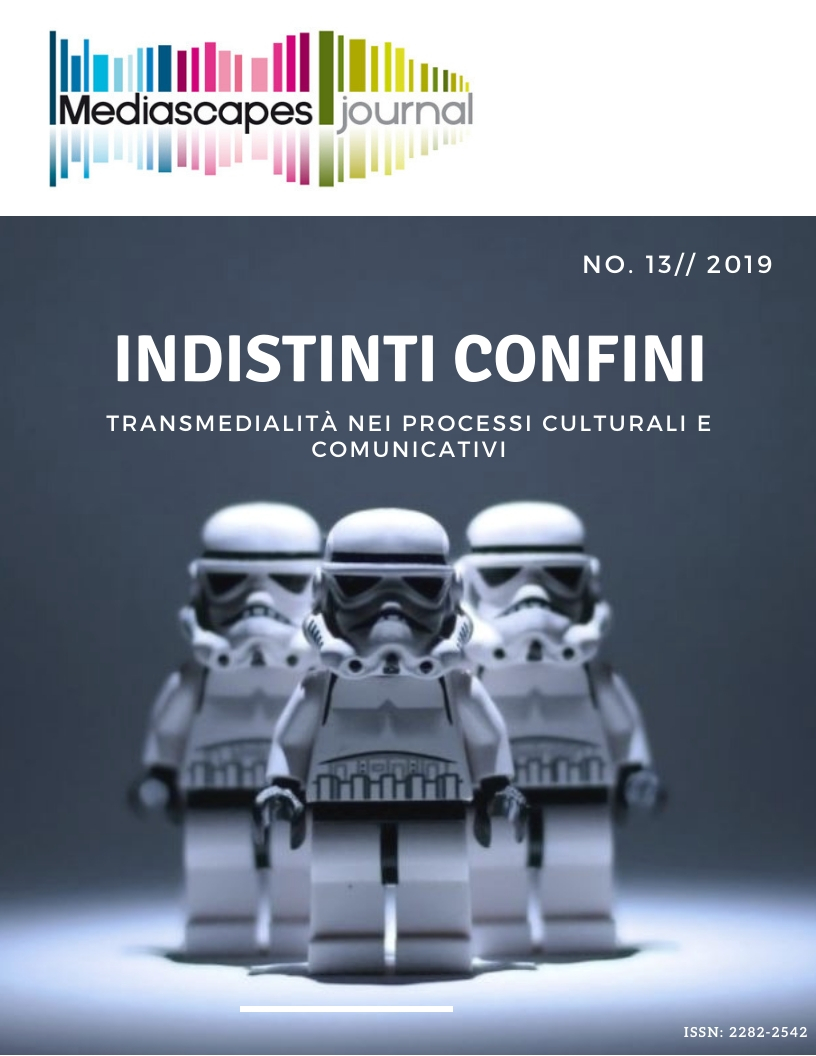Transmedia Legacy. La forza vitale dell'universo narrativo di “Doctor Who”
Abstract
Doctor Who is a long-running English television series broadcasted by the BBC: it debuted on November 23, 1963, and has the last episode broadcasted on December 6, 1989, which only ends a narrative segment, as various creative forces have allowed the show to return on screens in 2005.
Have been analyzed most of the related product to the show, finding three different stages of the show, each one referring to a peculiar transmedia asset.
The years of transmission, but also those of non-transmission, allowed Doctor Who to become a real transmedia case. Already from the first years of programming, in fact, the Whoniverse begins to take shape, according to a logic that can be reconducted to a transmedia archaeology, through books, films and spin-offs that expand what shown by individual episodes. Since the '70s, when the show was at its height of fame, fans felt the need to share their passion, starting to produce complementary stories distributed across multiple media, becoming early prosumers.
BBC suddenly decided in 1989 to stop airing the show due to a decrease in the audience. So much involvement built during the first phase made fans keep the format alive with fanmade content during the years of non-transmission. The broadcaster contributed with unreleased stories published by partner publishers, but also legitimating the work of some fans: some of the best products became hybrids between fanmade and proper content, enlarging the universe in an atypical way. In 1996, the saga was reactivated with a single TV movie with very poor results, despite the strong engagement.
On the contrary, the comeback of the series in 2005 was well received: some nostalgic fans, now television professionals, gave new life to the show, enriching the Whoniverse not only with new adventures, but also with new storytelling channels.
The promotion of the show's return, therefore, passed through the internet, expanding itself beyond the UK and creating a complete and successful Transmedia Universe. The three phases characterize different transmedia intensities, from a non-experienced one, to a non-balanced time, culminating in a third phase in which the transmedia strategy combines a well-built world enriched by the legacy of the past.
##submission.downloads##
Pubblicato
Come citare
Fascicolo
Sezione
Licenza
Gli autori che pubblicano su questa rivista accettano le seguenti condizioni:
- Gli autori mantengono i diritti sulla loro opera e cedono alla rivista il diritto di prima pubblicazione dell'opera, contemporaneamente licenziata sotto una Licenza Creative Commons - Attribuzione che permette ad altri di condividere l'opera indicando la paternità intellettuale e la prima pubblicazione su questa rivista.
- Gli autori possono aderire ad altri accordi di licenza non esclusiva per la distribuzione della versione dell'opera pubblicata (es. depositarla in un archivio istituzionale o pubblicarla in una monografia), a patto di indicare che la prima pubblicazione è avvenuta su questa rivista.
- Gli autori possono diffondere la loro opera online (es. in repository istituzionali o nel loro sito web) prima e durante il processo di submission, poiché può portare a scambi produttivi e aumentare le citazioni dell'opera pubblicata (Vedi The Effect of Open Access).


